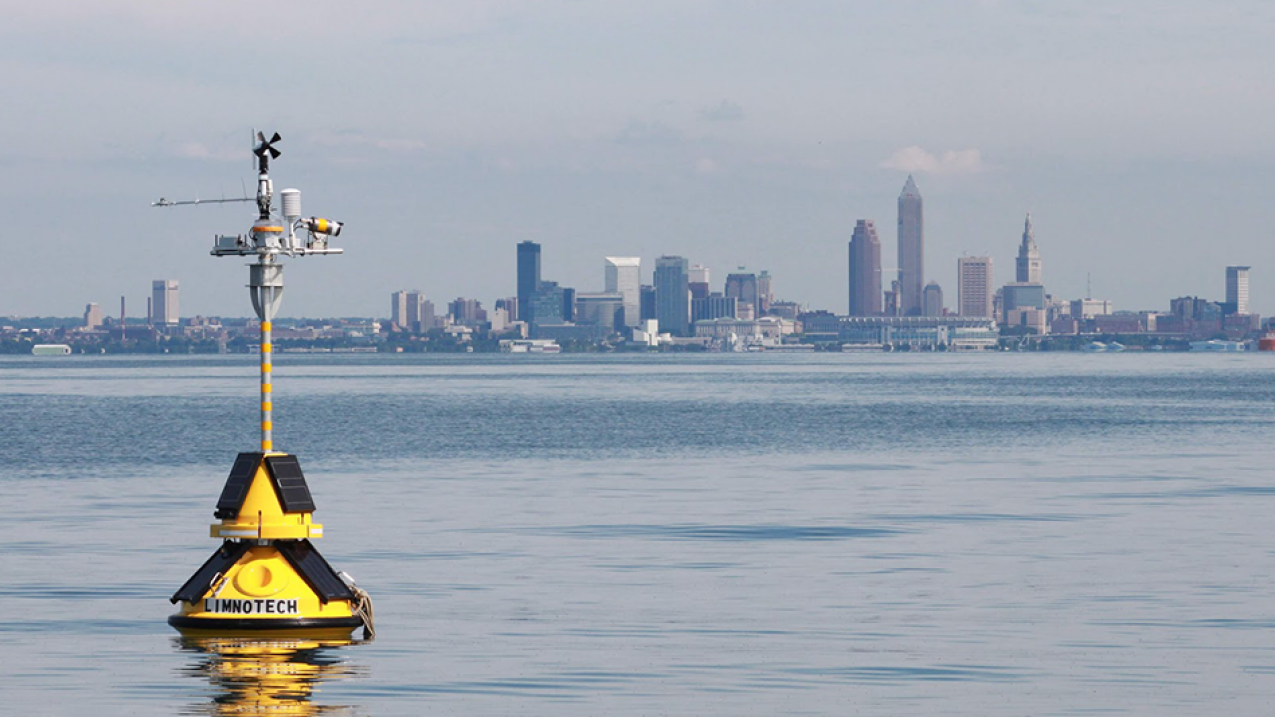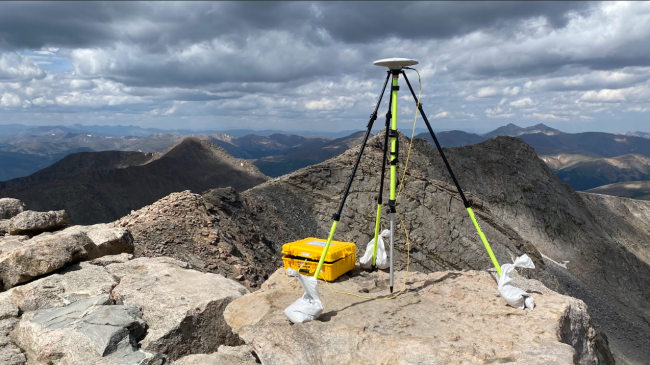
A buoy near the Cleveland Water intake — approximately 3.5 miles off the Cleveland shoreline — gives researchers at NOAA’s Great Lakes Environmental Laboratory the ability to incorporate water temperature, pH, turbidity, dissolved oxygen and other parameters into their Experimental Hypoxia Forecast model. Model results are helping water treatment managers anticipate and respond to changes in lake water quality. (Image credit: Courtesy of Ed Verhamme/Limnotech)
A new generation of high-tech buoys and new NOAA models offsite link are working together to keep the water safe to drink for more than 1.5 million Cleveland Water customers.
The network of buoys in Lake Erie – some from NOAA, some from LimnoTech offsite link and other private companies – are measuring vital criteria such as dissolved oxygen levels, water temperature, pressure, wind speed and direction that when input into experimental NOAA models, alert NOAA scientists when water with low-oxygen levels and/or harmful algae moves close enough to the Cleveland water intake systems to contaminate the drinking water.
Watch this video (below) produced by our partner, Ocean Conservancy, to see how Cleveland is using the latest science to prevent the next drinking water crisis.


